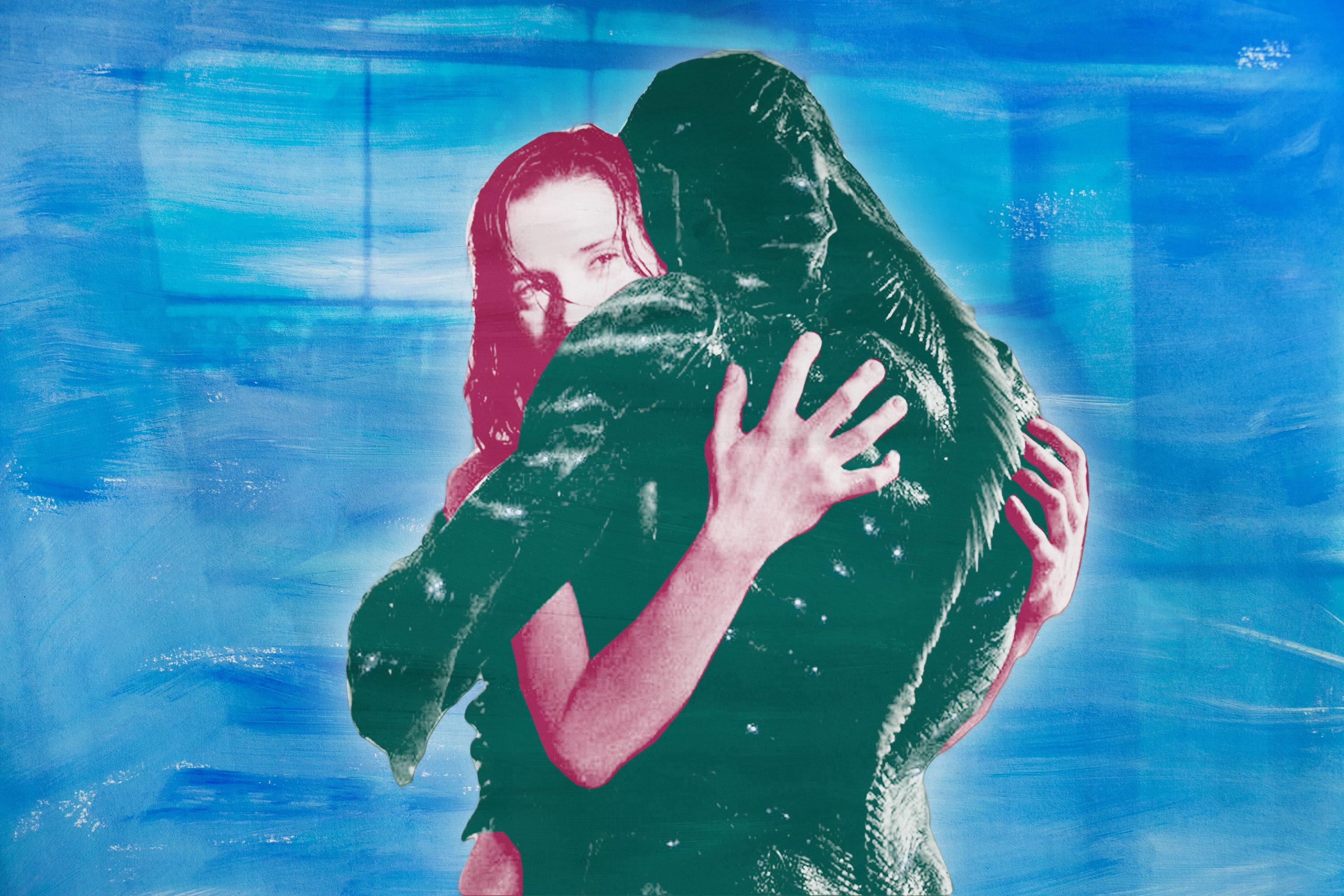
“A powerful story of love and empathy.”
Reviews for Guillermo del Toro’s most recent film, The Shape of Water, hail it as a triumph of romance. Thus far, del Toro has been awarded a Golden Globe for Best Director and the Venice Film Festival’s Golden Lion. The Shape of Water has been nominated for 12 BAFTA awards, and it is an assumed front-runner at the 2018 Oscars.
The Shape of Water has merits. It features strong performances, from Sally Hawkins as mute, gentle protagonist Elisa, to Octavia Spencer doing what she can in the role of spunky best friend, and Michael Shannon as a Michael Shannon type. It is visually enchanting, presenting a fairy-tale 1950s Baltimore awash in every shade of green. But, also: It is essentially a straightforward remix of Free Willy, except Willy has sexual intercourse with a human.
We’re not talking about that enough.
In Free Willy, a lonely outcast befriends an entrapped, highly intelligent sea creature and conspires to help it escape after establishing a strong emotional connection. In The Shape of Water, the exact same thing happens, except the strong emotional connection involves actual coitus.
Women sleeping with mythical creatures and animals has a long, storied history in literature and the arts. In Greek mythology, Zeus seduces the Spartan queen Leda after assuming the form of a swan, and he kidnaps and ravishes a Phoenician named Europa after transforming into a white bull. (Also in Greek mythology, Zeus chained Prometheus to a rock and had an eagle peck his liver out every day for eternity, so Zeus wasn’t exactly an example of a gentle soul.) In a modern twist on the woman-beast romance, the 1976 classic Canadian novel Bear is about a lonely woman named Lou who has sex with a bear. Canadians loved it! The book, by Marian Engel, won the Governor General’s Award, the country’s most prestigious literary prize. Guillermo del Toro may have found inspiration in this book, as it includes the following lines: “Take me to the bottom of the ocean with you, bear, swim with me, bear, put your arms around me, enclose me, swim, down, down, down, with me.” However, as Sara Bynoe pointed out in a Hazlitt retrospective about Bear, Lou does not get a happy ending. “As time goes on, Lou realizes she’s in love with the bear. Bear, being a bear, does not reciprocate her feelings,” Bynoe wrote.
When I first found out that The Shape of Water involved bestiality, I asked whether the fish-man was actually into it. Most people who had seen the movie answered that, yes, he likes it. The film obviously wants us to think that he’s feeling it. So that’s good. At the same time, zookeepers teach gorillas ASL and form intense emotional connections with them, but it’s not OK for them to have sex with the gorillas, and it would be very weird to make a movie romance about it.
I realize that this is a film, not reality, and that sexual taboos have been broken many times on-screen, most recently in the popular television show Game of Thrones, which features not one but two horny incest couples. And I realize that this is an allegory about two outsiders finding comfort and kinship in one another’s arms, and that it’s magical realism, and that Guillermo del Toro loves his monsters, and that maybe I should lighten up. But it’s still a monumentally gross allegory—one which involves a human woman allowing a creature with a scaly, slimy body; sharp claws; and a bizarre collapsible penis to enter her—and that deep, abiding ickiness must too be examined. Sure, Beauty and the Beast has “psychosexual undertones,” as Jia Tolentino noted at The New Yorker. But The Shape of Water is a psychosexual tone poem, a prestige version of those Chuck Tingle erotic thrillers, an art-school twist on Seduced By Doctor Bigfoot.
Try to think of a more sexually unusual film with this much critical acclaim. Midnight Cowboy? Sure, gigolos are scandalous—but not nearly as scandalous as sex with another damn species. Boogie Nights’ pornographic subject matter didn’t stop critical love. But it was also about adult humans having sex with each other. And while The Shape of Water certainly isn’t the raunchiest prestige hit—most of the sex occurs offscreen, and Blue Is the Warmest Color and Blue Valentine both feature far more explicit scenes—I can think of nothing more conceptually raunchy than fish sex, which is the linchpin of this film. The only thing keeping this from an NC-17 rating is the absence of the creature’s actual erection on-screen (although Elisa does describe it using sign language).
The flamboyantly peculiar erotics of The Shape of Water have not stopped critics and audiences from applauding it as a delightful masterpiece. I applaud it for a different reason: for its ability to make a freaky fable about the power of interspecies sex go mainstream.